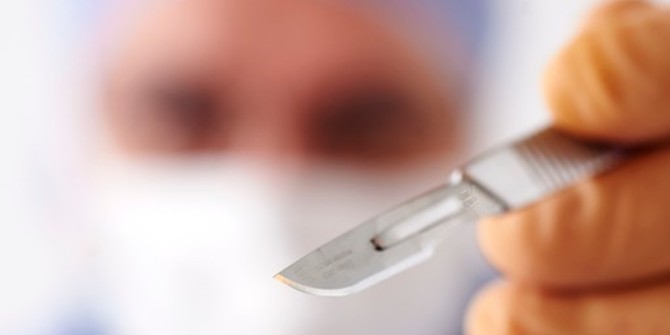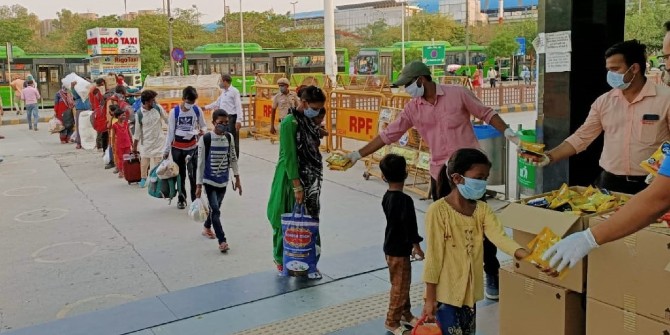Elective surgery was suspended during the pandemic. Surgical Registrar Katie Young explains the challenges of clearing the backlog and trying to bring down waiting times.
Surgical practice as we knew it was abruptly halted in response to the COVID-19 pandemic. Surgical societies around the world were quick to publish guidance and clear pathways for patient care during the peak of the pandemic. But it will take years to recover from the 4-6 month restriction on non-essential and cancer surgical interventions.

Across Europe, hospitals are gradually resuming non-urgent, elective surgical care. Hand surgery day case interventions resumed in reduced numbers in northern Italy in May and in selected UK units in June and July. There are many limiting factors to the rate of the return to “normal”, pre-COVID activity, including a lack of access to adequate theatre space, anaesthetic support and appropriate hospital facilities for recovery and ongoing follow-up. The challenges in accessing necessary investigations, imaging, specialist referrals and rehabilitation services must not be underestimated either.
The 30-day mortality for COVID-19-positive patients undergoing elective surgery has been suggested by the Lancet to be as high as 19.1%. This means rapid and accurate testing for both patients and staff is a must. Continuous access to appropriate PPE is vital. Protocols for the flow of patients in so called “COVID-light” pathways must be clear (ie COVID-19-negative clinical areas). The use of private and COVID-19-negative hospitals, which has been implemented in many parts of the world, including Europe and South America, will aid this.
Anaesthetists are a fundamental part in the management of severely ill COVID-19 patients. The consequences of this has been felt by the surgical community and, where possible, there has been a rise in use of regional and local (as opposed to general) anaesthetics.
As the pressure of COVID-19 on intensive care units dissipates, anaesthetic departments can gradually return to their surgical activities and specialist surgical intensive care beds can once again be used for patients undergoing transplants, complex cancer reconstructions, and cardiac surgery – to name but a few.
The pandemic has highlighted the fundamental link between health systems and healthy economies. Health must remain a higher priority for governments so as to prevent a further squeeze on health systems, which would likely worsen access to elective surgical treatment. In recent years, NHS England limited and/or stopped providing certain “non-essential procedures” such as removal of benign skin lesions and breast reduction. As a consequence of the pandemic the list of non-essential procedures could grow. If overall spending on elective surgery is cut, waiting times for the procedures still available on the NHS will be further prolonged, exceptional funding requests will required for those no longer provided, and the resulting burden would weigh heaviest on lower socioeconomic groups.
Already, in April of this year, 1.13 million patients were beyond the 18-week statutory waiting list target and although fines for waiting list target breaches were suspended from the 1st of April, the surgical need remains. Despite this, hospital trusts’ target management has remained under surveillance during the pandemic, and England is currently undertaking a review of waiting times. As part of the proposed changes it is likely that the 18-week target will become an average wait target. How the COVID-19 response will affect the implementation of these new standards is as yet unclear. Let us hope that it is more in keeping with the ethos of Prof Don Berwick, former advisor to Obama: that it is not punishment, but rather opportunity which achieves improvement.
The elective workload backlog and the consequences of delayed cancer diagnoses are likely to add impetus to the drive for evidence-based care. Healthcare providers will want to be able to demonstrate effectiveness and efficiency to warrant continuing certain elective procedures. It will be important for more efficient and streamlined surgical pathways to come out of this unprecedented backlog, making the best possible use of all available facilities, be they public or private sector.
Many surgical trainees across Europe were deployed to assist the anaesthetic and intensive care units and support medical teams when they were redeployed or had to take sick leave. The importance of maintaining job satisfaction as the doctors return to their specialities and ensuring quality training for this workforce must not be underestimated, and it should be a priority for health ministers.
Communication and sharing of ideas between the surgical communities across the globe has never been so strong – one example being the boom in educational webinars for surgical trainees. The successes and failures of streamlining surgical care must too be disseminated among both the surgical community and policymakers.
The long-term consequences of the COVID-19 pandemic on elective surgery remain deeply uncertain. Attention to financial and strategic sustainability is required. Preparedness for a potential second wave is essential. The rapid adaptive responses to the pandemic should be used as a means to accelerate the reform and improvement of healthcare provision and provoke a fast and effective response which can enable a speedy recovery of surgical services.
This post represents the views of the authors and not those of the COVID-19 blog, nor LSE.





